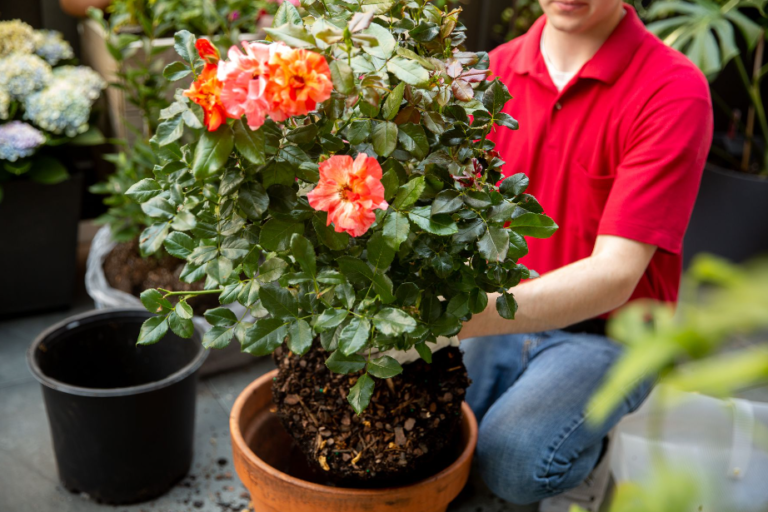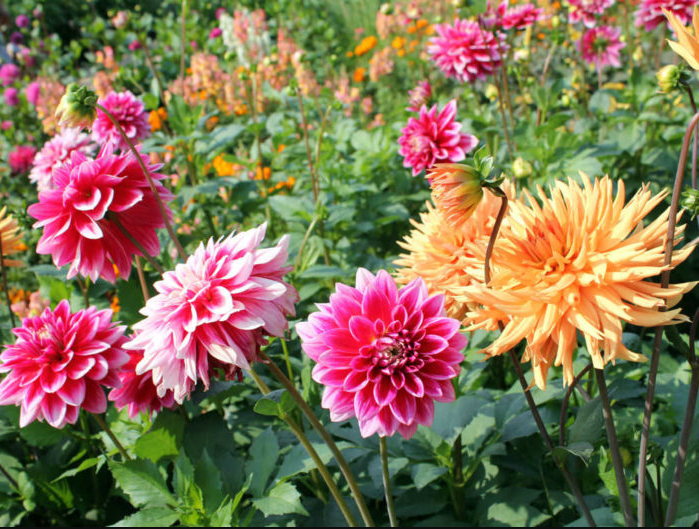HOW TO PLANT AND GROW MORNING GLORY FLOWERS
Ipomoea purpurea
The common morning glory is an easy-to-grow ornamental flower that’s tolerant of a variety of conditions, a voracious grower that opens its blooms wide in the morning only to wilt by the afternoon.
Requiring little care, it’s the annual groundcover and trellis plant of choice for gardeners everywhere.
We’ll take a look at where the morning glory comes from and take a gander at its history in horticulture. But more importantly, we’ll learn what it takes to grow morning glory well so that it’s at its best.
The common name “morning glory” is thrown around to describe various plants in the Convolvulaceae family, a broad group that includes moon flowers (I. alba) and others. The Ipomoea genus has more than 500 species under its umbrella, and these are most often grown as annuals.

This article will be looking specifically at I. purpurea and not the other varieties of morning glories. But don’t worry, faithful readers, we’ll be covering those species in future material!
An Icon for Artists and Writers
The image of the morning glory is represented in famous works of painting and sculpture across the world by Georgia O’Keeffe, Sopheap Pich, Suzuki Kiitsu, and others. It is also a regular reference in poetry, literature, and folklore.
The Chinese have a tale of two lovers who spent all of their time together and spurned their chores until the work piled up around them. They were punished and forced to work, and allowed to see each other but once a year. In this story, morning glory represents this brief period of time for two lovers to spend together. Christian tradition suggests the short life of a morning glory flower represents the finite amount of time we have in the world, and in Victorian times the morning glory stood for a love that never ends… or one that goes unrequited, often decorating headstones.

Man, this flower has some bittersweet themes going on, huh?
Don’t worry, Walt Whitman says, “A morning-glory at my window satisfies me more than the metaphysics of books,” and philosopher Alan Watts opines, “The morning glory which blooms for an hour differs not at heart from a giant pine that lives for a thousand years.”

That lightens things up a bit.
Medicinal and Ritual Use
The morning glory has been used as a laxative in Asian and Mesoamerican countries for centuries, and a tea was sometimes concocted from its roots as a diuretic and expectorant. Tea brewed from the dry leaves has been used by herbal healers to treat headaches, too.
Seeds from the morning glory have been consumed as a hallucinogenic substance because of a compound called LSA (similar to LSD). Mesoamerican Indians would imbibe these seeds to enter trances and altered states for ritualistic purposes.
The seeds are toxic, however, and can cause serious health problems when consumed. They are often also coated with agricultural chemicals. Do not eat them.
Growing Conditions: A Flower That Can Take It All
So it’s true that various species of I. purpurea can grow in just about any soil type, and it looks like it thrives in poor soil types. Heck, it seems to flower more often in poor soil than in well-drained, loamy soil. So what’s going on?
Many plants will produce an abundance of flowers not when they’re happy, but when they’re stressed and trying their best to reproduce before they kick the bucket. That morning glory growing on the side of the old iron works isn’t flowering because it’s happy, it’s flowering because it’s struggling to ensure it leaves another generation to pick up where it couldn’t survive.
Because I. purpurea can grow in almost any soil condition, it leads many gardeners to suspect that it doesn’t need to be fertilized. That’s not exactly true; when grown in the right conditions, a morning glory thrives with a monthly fertilizer (as the package directs). Most often a 10-10-10 balance will work, granular or liquid.
Endless Light: I. Purpurea Thrives in Full Sun
I. purpurea thrives in the sunniest conditions. This adoration of sunshine is what makes morning glory such an ideal plant for trellises, arbors, fences, and walls. It’s often grown in hot and open locations specifically to provide ample shade via its dense growth.
It can also grow up along the side of a building and offers some drastic improvements in your cooling bill, all while providing seemingly non-stop flowers from May through September. Unlike ivy and other vines, morning glories do not grow roots for climbing. To encourage these vines to cover the side of a structure, you’ll need a trellis or lattice for them to climb.
On the one hand, you won’t need to worry about morning glories damaging the walls of your structure! But on the other, a support system for the vines is required and will need to be cleaned at the end of each season.
That many twisting, crawling vines can be extremely difficult to entirely clean up year after year, but it sure does look nice when it’s in bloom!
The name “morning glory” references how the flowers of this plant will open fully in the morning sun.
“Glory” is an understatement, when this plant is thriving and the weather is on its side. But those blooms are sensitive and will begin to wither by the time the hot afternoon sun starts to really beat down.
Annual or Perennial?
I. purpurea can tolerate about as much fun as you can through as it, but it’s most often grown as an aggressively self-seeding annual, to the degree that it seems like it’s a perennial in warm locales. When the flowers take on a crispy brown, brittle texture, the seeds are ready to pop and they get to work establishing themselves for next year.

The meticulous gardener can remove each flower after it blooms to prevent unwanted spread, but a thorough cleanup in the fall followed by an attentive wedding in the springtime will keep unwanted plants from sprouting up.
However, if you’ve got an area you want to be covered without additional planting and effort, this is the plant for you; it will rapidly cover whatever it grows on, whether that’s a flat surface or a vertical one such as a trellis or fence. You can also collect the seed for sowing in different locations.






